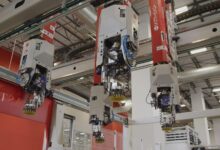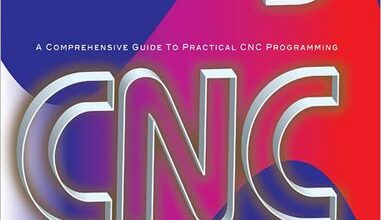Comparing Industrial Cutting Techniques
Advertisement
Introduction
Industrial cutting techniques play a crucial role in various manufacturing processes, from metal fabrication to woodworking. Choosing the right cutting method can significantly impact efficiency, cost, and quality of the final product. In this article, we will explore and compare different industrial cutting techniques to help you make informed decisions for your specific needs.
Understanding Industrial Cutting Techniques
Industrial cutting techniques encompass a wide range of methods used to cut materials such as metal, plastic, wood, and composites. These techniques can be broadly classified into mechanical cutting, thermal cutting, and chemical cutting. Each method has its own strengths and weaknesses, making it essential to understand the differences to choose the most suitable one for your application.
The Importance of Choosing the Right Technique
Choosing the right industrial cutting technique is crucial for achieving high precision, minimizing material waste, and reducing production time. By selecting the most appropriate method for your specific material and thickness requirements, you can optimize efficiency and ensure the quality of your end product.
Factors to Consider When Comparing Techniques
When comparing industrial cutting techniques, several factors need to be taken into account, including material type, thickness, desired precision, production volume, and budget. By evaluating these factors carefully, you can determine which cutting method will best suit your needs and objectives.
Overview of Common Industrial Cutting Techniques
There are several common industrial cutting techniques used in various manufacturing industries, each offering unique advantages and limitations. Some of the most popular methods include laser cutting, water jet cutting, plasma cutting, abrasive water jet cutting, and more. By understanding how each technique works, you can make informed decisions for your cutting applications.
The Evolution of Industrial Cutting Technology
Industrial cutting technology has evolved significantly over the years, with new innovations and advancements constantly being introduced. From traditional methods like sawing and shearing to modern techniques such as laser and plasma cutting, the industry continues to push boundaries in terms of precision, speed, and versatility.
Potential Applications of Different Techniques
Each industrial cutting technique has its own unique set of applications where it excels. For example, laser cutting is ideal for high-precision cutting of metals, while water jet cutting is well-suited for materials like glass and ceramics. By understanding the potential applications of each technique, you can choose the most suitable one for your specific needs.
Strengths and Weaknesses of Comparing Industrial Cutting Techniques
Strengths
Industrial cutting techniques offer a wide range of strengths that make them valuable tools for various manufacturing processes. Some of the key strengths include high precision, fast cutting speeds, minimal material waste, versatility in cutting different materials, and automation capabilities. These strengths can help improve efficiency, quality, and overall productivity in industrial cutting applications.
Weaknesses
Despite their many strengths, industrial cutting techniques also have certain weaknesses that need to be considered. Some of the common weaknesses include high initial costs for equipment and setup, limitations in cutting thick materials, heat-affected zones in thermal cutting methods, and maintenance requirements for complex systems. By understanding these weaknesses, you can make informed decisions and mitigate potential challenges in your cutting processes.
Comparing Industrial Cutting Techniques Table
| Technique | Strengths | Weaknesses |
|---|---|---|
| Laser Cutting | High precision, fast cutting speeds | High initial costs, limited thickness |
| Water Jet Cutting | Versatile, no heat-affected zones | Not suitable for all materials |
| Plasma Cutting | Fast cutting speeds, cost-effective | Requires regular maintenance |
Frequently Asked Questions
1. What factors should I consider when choosing an industrial cutting technique?
When selecting an industrial cutting technique, factors to consider include material type, thickness, desired precision, production volume, and budget.
2. Can industrial cutting techniques be used for cutting all materials?
No, different techniques have limitations and are better suited for specific types of materials.
3. How do industrial cutting techniques impact production efficiency?
Choosing the right cutting method can significantly improve production efficiency by reducing waste and increasing precision.
4. What are the main advantages of laser cutting?
Laser cutting offers high precision, fast cutting speeds, and minimal material waste.
5. How can I determine the best cutting technique for my application?
Consider the material type, thickness, desired precision, and production requirements to choose the most suitable cutting technique.
6. Are there any safety considerations with industrial cutting techniques?
Yes, safety measures should always be followed when using industrial cutting equipment to prevent accidents and injuries.
7. What are the future trends in industrial cutting technology?
The future of industrial cutting technology is likely to focus on advancements in automation, efficiency, and integration with other manufacturing processes.
Conclusion
In conclusion, comparing industrial cutting techniques is essential for optimizing efficiency, quality, and productivity in manufacturing processes. By understanding the strengths and weaknesses of different methods, as well as considering factors like material type and production volume, you can choose the most suitable technique for your specific needs. Whether you require high precision cutting or cost-effective solutions, there is a cutting technique that can meet your requirements. Take the time to evaluate your options and make informed decisions to achieve the best results in your industrial cutting applications.
Disclaimer
It is important to note that the information provided in this article is for general informational purposes only. Before making any decisions related to industrial cutting techniques, it is recommended to consult with professionals in the field to ensure the most accurate and up-to-date information for your specific needs.







